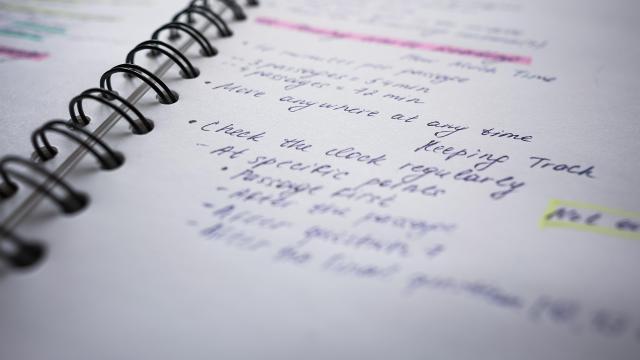Memory is incredibly complex, which is probably why it’s been studied and researched so much—and why researchers who make big discoveries about how it functions get phenomena named after them. A great example of this: the Von Restorff effect, which refers to our brains’ acuity for remembering distinctive pieces of information over more uniform ones, a fact discovered by a German psychiatrist named Hedwig von Restorff. It’s an interesting fact of biology, but it can also be very useful to know when you’re studying a difficult concept. Here’s why, and how to put the Von Restorff effect to good use.
What is the Von Restorff effect?
In previous articles, I’ve discussed various memory effects you can capitalize on when you study, like the primacy effect, the Proust effect, and the production effect. All of these begin with a nice, a round-looking “P.” If I add the Von Resteroff effect to that list, it will stand out solely because of the variety in its name—the hard angle of that “V.” Because of this, you’re more likely to remember the Von Restorff effect…and that’s the Von Restorff effect in action.
In the simplest terms, it is an “isolation effect” that ensures your brain will remember an item in a list if it has a distinctive feature that sets it apart from other entries on the list. When studying, you can achieve this effect by changing the meaningfulness of an item or a piece of information in some way, whether by color, size, font choice, or another way.
How to use the Von Restorff effect to remember what you study
Once you realize the simplicity of this concept, it’s easy to find ways to work it into your study habits.
- In your notes, use a highlighter specifically to highlight words or concepts you need to remember for a test.
- When using flashcards, write concepts and words you’re having a hard time grasping in a different color.
- When studying with others and talking through the material (or reading aloud from your notes), try associating a unique motion—like a specific hand gesture—with the concepts you’re discussing.
- Use a shape, like a circle or box, to outline key parts of your notes or textbook materials.
- When mind-mapping, move the circle containing the most important concepts (or the one you’re struggling to grasp) to a more removed part of your page, differentiating it from the rest of the clusters visually.
The goal is to differentiate the things you really need or struggle to remember using color, motion, shape, or even orientation. Setting certain ideas or words apart will make them stick in your brain better, no matter how you do it.

Leave a Reply
You must be logged in to post a comment.